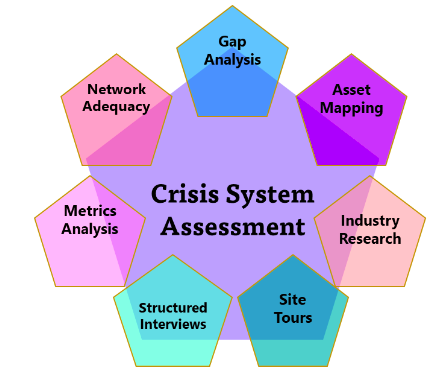
Do you remember the moment you fell in love with your work?

For me, the most fulfilling experience of my career in behavioral health care involved supporting and designing crisis residential units1, or CRUs, across the state of Michigan. New to the field as a macro social worker, I was privileged to be considered a subject matter expert in CRUs by my peers. Soon after, I was tasked with designing and opening a CRU in Michigan’s Upper Peninsula, a project that brought me great excitement and honor.
At the time, I knew little of the U.P., aside from its identity as a winter wonderland far from home. I was committed to designing and opening a CRU that met the needs of the U.P. community, and I made it my mission to get to know the extremely rural portion of my beloved state over several months. This meant becoming a veritable dual citizen of the upper and lower peninsulas of Michigan. Little did I know, this dedication allowed me to avoid an incredibly prevalent misstep in crisis services design and planning- plugging in a one-size-fits-all solution.
One-size-fits-all, or even one-size-fits-most, is a fallacy. A behavioral health crisis program or continuum may appear to fit a community, but that does not mean it fits well. When the default is a one-size-fits- all approach without considering the unique needs of a community, a mismatch or gap occurs and complications can arise in our relationships where trust begins to erode, and doubt takes over.

Crisis services are in the midst of a long-awaited and well-deserved spotlight. Thoughtful and sound research blended with the development of tools are advancing and expanding crisis system knowledge rapidly. While increasingly accessible tools inform the development of strong crisis services, no one tool is the golden goose. It would have been a grave mistake for me to assume that a program that found success serving Kent County, Michigan (population 658,046) would realize the same success serving all the Upper Peninsula (population 301,609 but 18 times larger in area). In population density alone, the differences paint a clear picture.
As you engage dialogue and planning for crisis service development and expansion in your community, consider what makes it unique. Do you live in a college or university town? Is your funding system complex and nuanced? Is the geographic location urban, suburban, rural, or frontier? Is there good access to public transportation, or have the tires of an Uber never touched the roads? Through thoughtful assessment and community engagement, the rightsized behavioral health crisis continuum can be developed in any community.
1 Crisis Residential Units are short-term behavioral health treatment programs in which individuals experiencing a behavioral health crisis receive person-centered care in a 24/7, homelike setting.